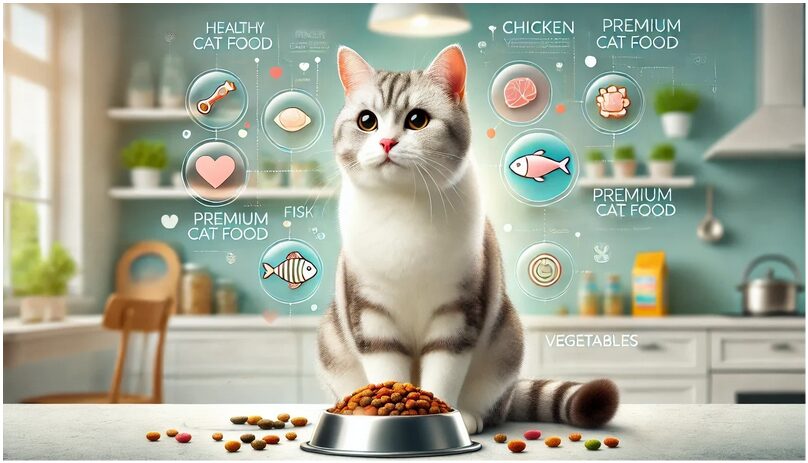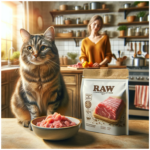When it comes to feeding your feline friend, the world of cat nutrition can feel overwhelming. With so many products, claims, and opinions circulating online, it’s easy to fall victim to misinformation. In this guide, we’ll debunk common myths about feline diets, provide evidence-based insights into their nutritional needs, and help you make informed choices for your cat’s health and happiness.
Understanding Cat Nutrition Needs
Cats are obligate carnivores, meaning their bodies are designed to thrive on a diet rich in animal-based proteins. Unlike omnivores, they have specific dietary requirements that cannot be met with plant-based foods alone. Here are the essential nutrients every cat needs:
- Protein: Provides essential amino acids like taurine, crucial for heart health, vision, and overall well-being.
- Fat: Supplies energy and essential fatty acids for a healthy coat and skin.
- Vitamins and Minerals: Cats need specific nutrients like vitamin A, vitamin D, calcium, and phosphorus, often found in meat and organs.
- Water: Cats have a low thirst drive and rely heavily on moisture from their food.
Debunking Common Cat Nutrition Myths
There’s no shortage of misconceptions about what’s best for your feline friend. Let’s clear up some of the most common myths:
Myth 1: Cats Can Be Vegetarian or Vegan
This is one of the most dangerous myths in cat nutrition. Cats lack the ability to synthesize certain amino acids, such as taurine, which are only found in animal proteins. A plant-based diet can lead to severe health issues, including blindness, heart disease, and even death.
Myth 2: Dry Food Is Better for Dental Health
While some dry foods claim to reduce tartar, their benefits are minimal compared to professional dental cleanings or dental treats approved by the Veterinary Oral Health Council (VOHC). Moreover, dry food lacks the moisture cats need for hydration.
Myth 3: Grain-Free Food Is Always Healthier
Grain-free doesn’t necessarily mean better. Some grain-free diets replace grains with other carbohydrates like potatoes or peas, which may not be more beneficial for your cat. Additionally, some studies have linked grain-free diets to heart disease in pets due to a possible link with taurine deficiency.
Myth 4: All Commercial Cat Foods Are the Same
Not all cat foods are created equal. Cheaper brands often contain fillers, by-products, and artificial additives that may not provide the necessary nutrients. It’s crucial to choose a high-quality food tailored to your cat’s needs.
How to Choose the Right Food for Your Cat
Selecting the best food for your cat involves understanding their individual needs and the quality of the food. Here’s a step-by-step guide:
1. Read the Ingredient Label
Look for high-quality, animal-based proteins as the first ingredient (e.g., chicken, turkey, beef). Avoid foods that list generic terms like “meat by-products” or “animal digest.”
2. Check for AAFCO Approval
The Association of American Feed Control Officials (AAFCO) sets nutritional standards for pet foods. Look for a statement on the label indicating that the food is “complete and balanced” for your cat’s life stage.
3. Consider Your Cat’s Life Stage
Kittens, adult cats, and senior cats have different nutritional needs. For example, kittens need more protein and calories to support growth, while senior cats may benefit from lower-calorie options to maintain a healthy weight.
4. Evaluate Your Cat’s Health Needs
If your cat has specific health issues, such as obesity, kidney disease, or food allergies, consult your veterinarian for dietary recommendations.
5. Balance Dry and Wet Food
Incorporating wet food into your cat’s diet ensures they get enough moisture, which is vital for urinary health. A mix of wet and dry food can provide the benefits of both.
Understanding Cat Food Labels
Decoding cat food labels can be tricky, but it’s an essential skill for any pet owner. Here are some key points to consider:
- Guaranteed Analysis: This lists the minimum percentages of crude protein and fat, and the maximum percentages of fiber and moisture.
- Ingredient List: Ingredients are listed by weight, with the heaviest first. Look for named meat sources like “chicken” or “salmon” rather than vague terms.
- Additives and Preservatives: Avoid foods with artificial colors, flavors, or preservatives. Natural preservatives like vitamin E (tocopherols) and vitamin C are preferable.
Common Types of Cat Food
Here’s a breakdown of the main types of cat food available and their pros and cons:
- Dry Food (Kibble):
- Pros: Convenient, cost-effective, long shelf life.
- Cons: Low moisture content, may contain fillers.
- Wet Food (Canned):
- Pros: High moisture content, often more palatable for cats.
- Cons: More expensive, shorter shelf life after opening.
- Raw Diets:
- Pros: Mimics natural diet, often minimally processed.
- Cons: Risk of bacterial contamination, requires careful preparation.
- Freeze-Dried and Dehydrated Food:
- Pros: Convenient, retains more nutrients than kibble.
- Cons: Expensive, needs rehydration.
Tips for Transitioning to a New Diet
Cats can be notoriously picky eaters, so transitioning to a new food requires patience. Follow these steps:
- Start Slow: Mix a small amount of the new food with their current food, gradually increasing the ratio over 7–10 days.
- Monitor Their Reaction: Watch for signs of digestive upset, such as vomiting or diarrhea, and adjust accordingly.
- Be Consistent: Feed at the same times each day to establish a routine.
Final Thoughts
Feeding your cat a balanced, nutritious diet is one of the most important ways to ensure their health and happiness. By debunking myths, understanding their unique dietary needs, and learning to read labels, you can confidently navigate the world of cat nutrition.
For more tips on feline care and the latest research in pet health, stay tuned to our blog. Your cat deserves the best—and with the right knowledge, you can give it to them.






